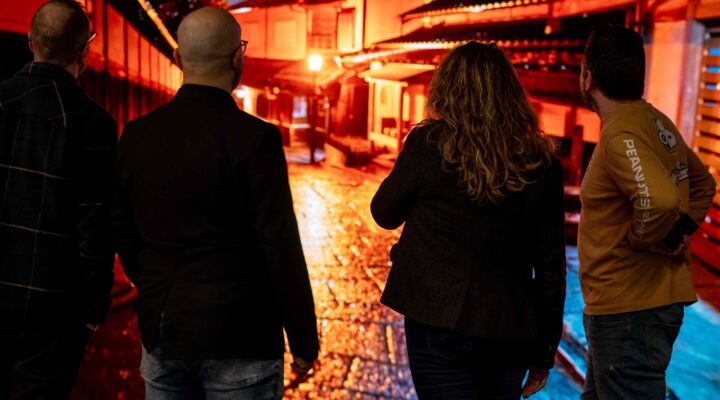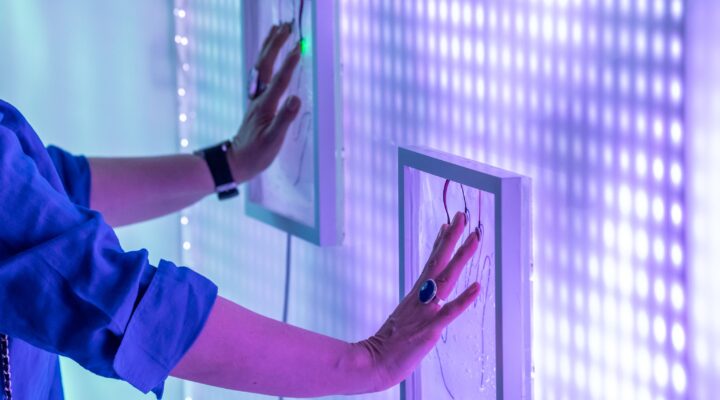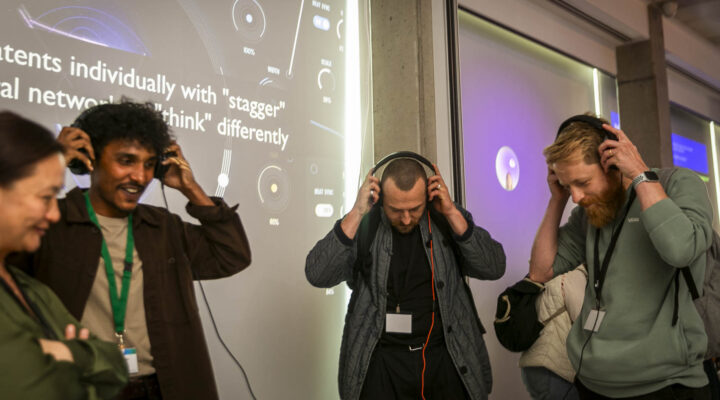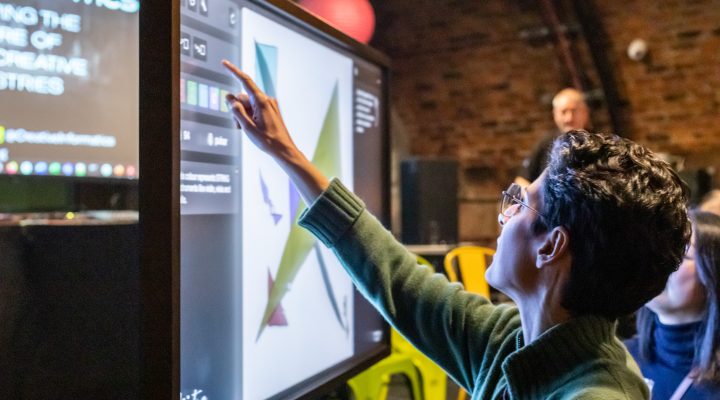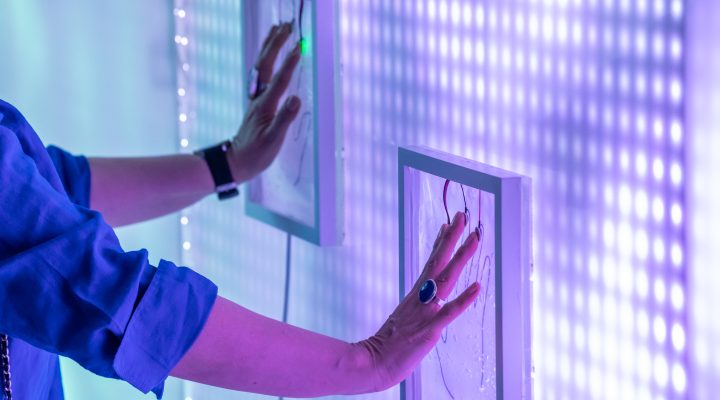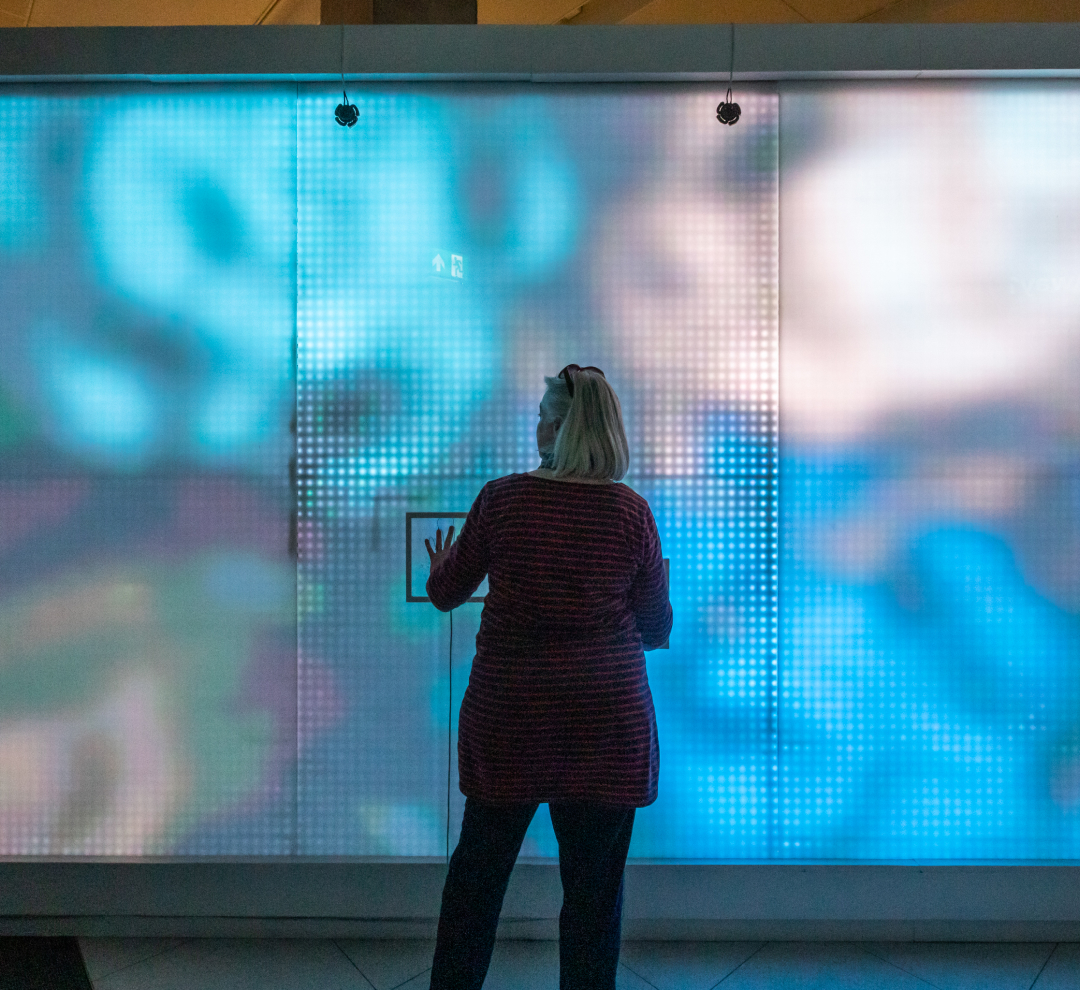
Small research project funded by Creative Informatics
April – October 2022: final report
NEWS | 9 JANUARY 2023
The research funding from Creative Informatics allowed a range of activities which explored the dramatic potential of embedding sound in the narrative of a screenplay, developing the assertion by Randy Thom, Head of Sound Design at Skywalker Sound that “sound design is not something that should only happen in post-production … but needs to happen much earlier, beginning with the script.”
Initial research consisted of a series of structured conversations with Dr Iain McGregor, Head of Sound Design at Edinburgh Napier University. Iain’s extensive knowledge and his own research projects generated a range of narrative possibilities from the use of ELRA sound cannons by the police in crowd-control, to the development of eco-acoustics as discipline seeking to minimise noise pollution or improve natural environments through sonic and other interventions. Of particular interest was Iain’s work in the development of new technology in which in-ear headphones or ear buds function as discrete hearing aids.
This expanded the research into the realm of Augmented Reality and how this might be embedded into the core elements of any dramatic narrative – character, dialogue, setting, plot and story world.
These ideas, concepts and data fed into a larger creative and commercial one: the writing and development of a high-end television series, The Hum, written by James Mavor. This project is now in development with Glasgow/Cologne-based Compact Pictures and ultimately targeted at international streamers like Netflix, Amazon or Apple TV.
A second thread of the Dynamic Range research project involved the writing, filming, editing and sound mix of a series of short experimental scenes which tried out some of the ideas generated in the first phase. In particular, the development of a central character – now an audiologist – developing a prototype ear bud technology which expands the normal human auditory range, enabling her to hear and identity ultra- and infra-sonic frequences. Using sonified data from bluetooth, Wi-Fi, electromagnetic and other sources, the character develops what could be described as a ‘superpower’ – albeit one firmly grounded in scientific reality.
A final key element is the audience experience. Here, the use of immersive sound (potentially binaural in future iterations) brings the viewer (and listener) into the character’s subjective experience – their point of view, or rather, point of audition – creating an experience that is truly immersive.
This is, perhaps, the key finding from this research project – the ability to create a truly immersive experience for the audience through a combination of traditional narrative techniques and state-of-the-art developments in listening and hearing technology.
This, in turn, has clear commercial appeal to streamers and broadcasters looking for content to maximise the potential of Dolby Atmos, Apple AirPods Pro and Apple TV +.
The next phase of research will inform the further development of the TV series which is currently being pitched to streamers and production companies at C21 TV market in London and elsewhere.
Further information: j.mavor@napier.ac.uk
Research outputs:
- A paper will be delivered at the Sound/Space conference Montpellier in April 2023.
- A special journal issue Screenwriting Sound and Music is in development with colleagues from the Screenwriting Research Network.
- You can watch one of the short videos below:
